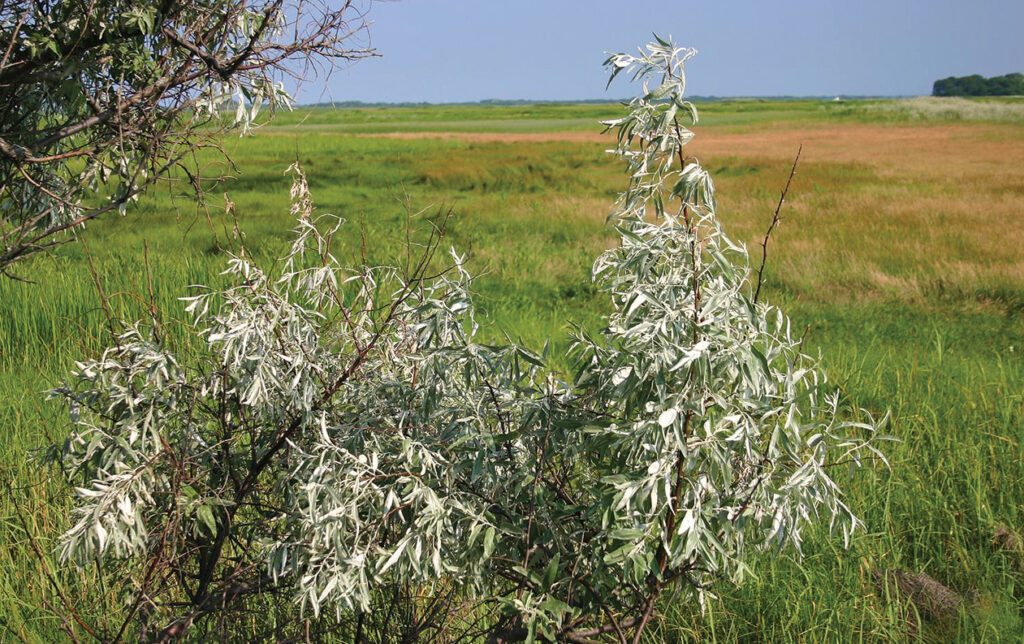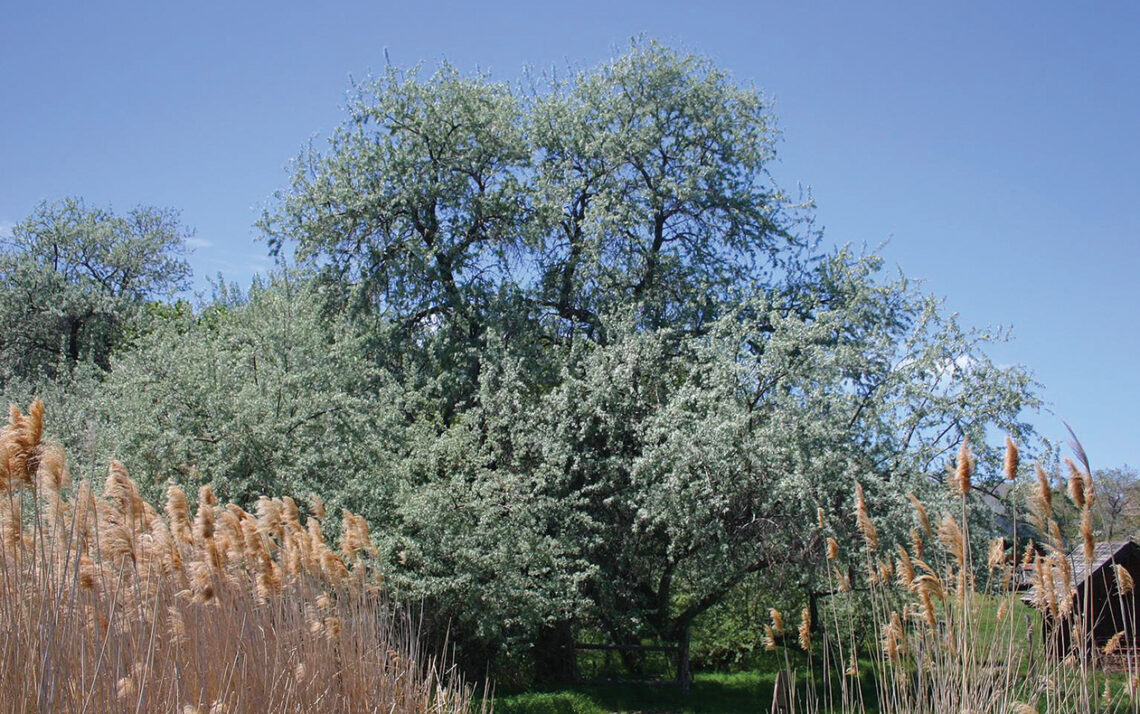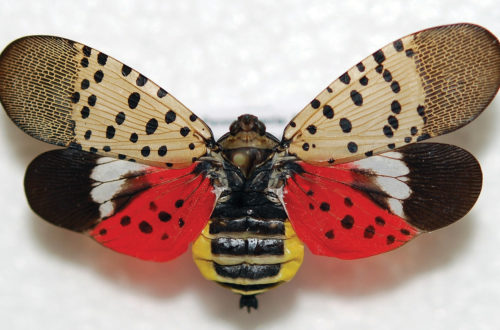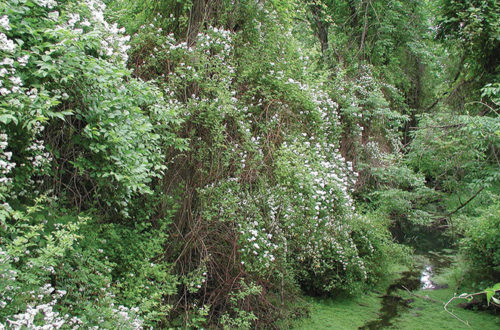RUSSIAN OLIVE (Elaeagnus angustifolia) is native to southern Europe and western Asia. According to the Native Plant Trust “it has been planted extensively throughout the United States as a windbreak, ornamental shrub, soil stabilizer, and wildlife attractant.”
It was brought to the United States in the early 1900s. For many years, the U.S. Soil Conservation Service (now
the Natural Resources & Conservation Service) recommended it for wildlife habitat and as a windbreak.
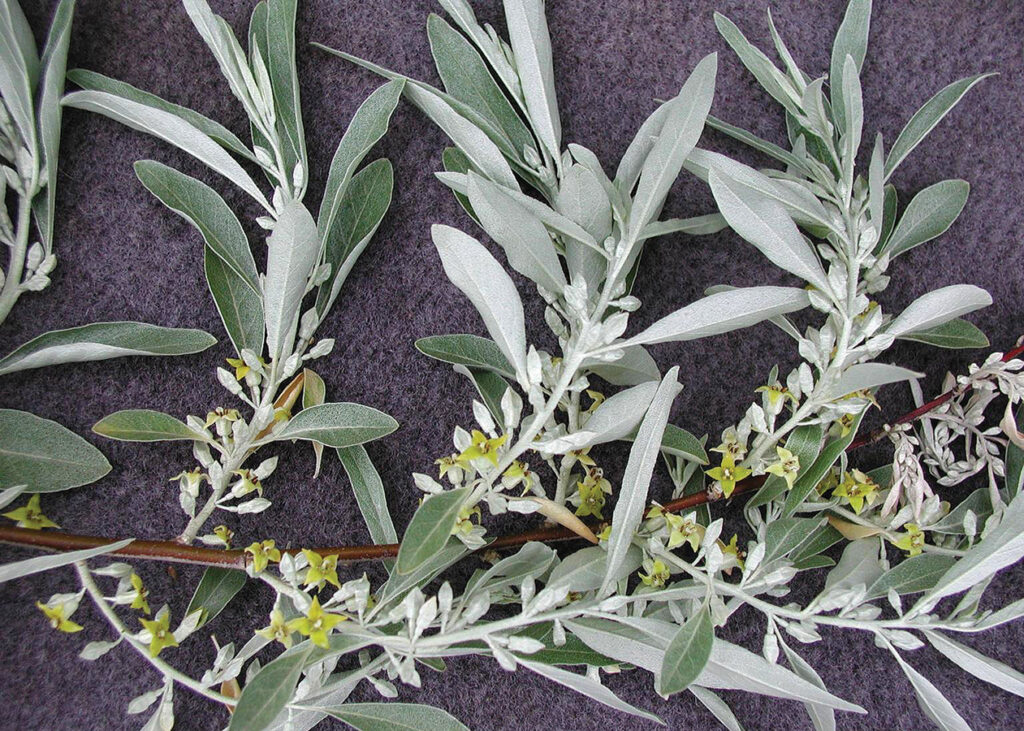
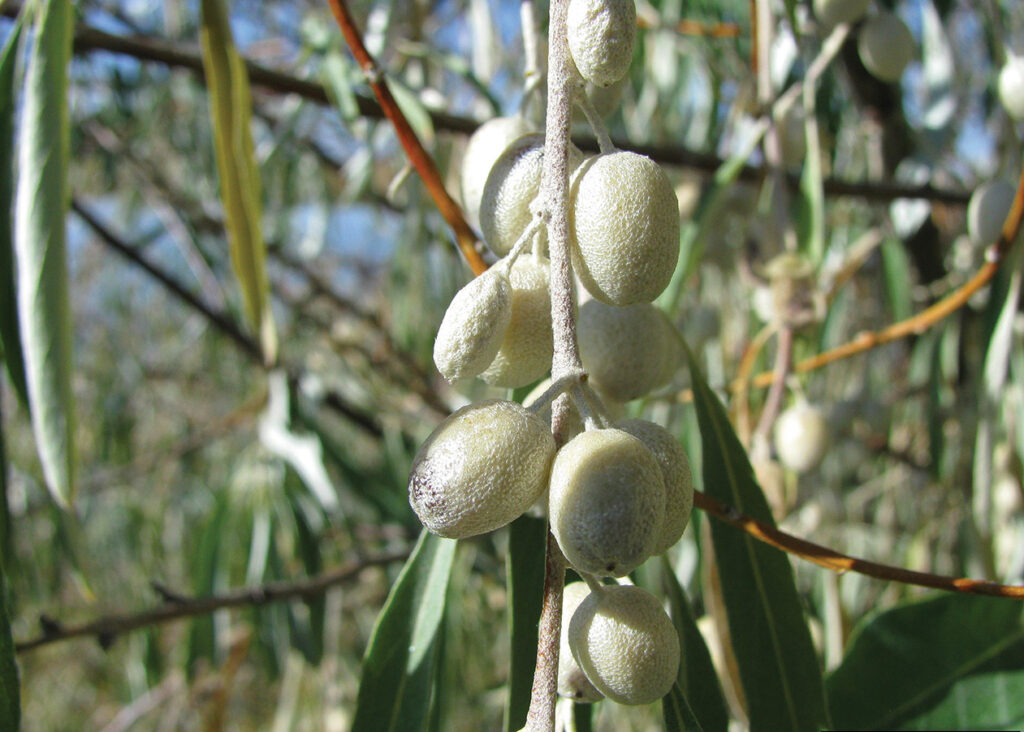
Identification
Russian olive is a thorny shrub or small tree that can grow to 25 feet or higher. It prefers disturbed areas, roadsides, forest edges, meadows and fields.
The lanceolate leaves are arranged
alternately. They’re 1.5-3.25 inches long with a smooth margin and silver scales above and below.
The aromatic light yellow flowers are trumpet shaped and held in groups of 1-3. They’re about half an inch wide.
Reproduction
Russian olive can reproduce sexually or vegetatively. Root suckers are produced at the root crown after disturbance or damage to the above-ground tree from cutting, fire or girdling.
Look-alikes
It resembles its cousin, Autumn olive, but the leaves are narrower and more silvery. It also has dry mealy yellow half-inch fruits where Autumn olive fruits are red/pink and juicy. The branches of Russian olive tend to be more flexible and thornier than Autumn olive. Look for narrow, silvery leaves; fragrant yellow flowers and lustrous reddish-brown bark.
Unfortunately, like its relative, it can also fix nitrogen so it’s an early colonizer of disturbed places.
Control
Control methods are similar to those used for Autumn Olive.
